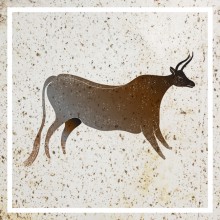Imagine yourself a schoolboy of a “pre-internet” age. Suppose you live in France 1940. Fortunately, your region is not occupied by the Germans... One September day in search of something spectacular and unusual you and your friends go to see a tree struck down by a lightning.
These were the circumstances of September 12, 1940, when “the Sistine Chapel of Paleolithic Art,” Lascaux caves, were discovered. Behind a fallen pine, four teenagers – Marcel Ravidat, Jacques Marsal, Georges Agnel, and Simon Coencas – saw a narrow crack in the marble cliffs and reported it to their teacher Leon Laval.
Already a week after the event, the first researchers went to the cave. At first, they doubted the authenticity of the drawings. But careful examination has proved the authenticity of the graffiti, which was painted on the walls of the cave back in the 18,000-15,000 BC!
In 1948, the cave was outfitted for tourists, the flow of which has increased so much that they began to threaten the preservation of a unique cave. Less than 10 years after that the first signs of damage were observed – from carbon dioxide, exhaled by the visitors. In subsequent years, the cave suffered a “green” and “white” diseases – a colony of algae and calcite crust... Despite all attempts to combat these diseases, some of the images were damaged irreversibly. So in 1960 it was decided to close the entrance to the public. Instead, in 10 years, the exact replica was built nearby – Lascaux II.
Today, taking a virtual tour over Lascaux at a special website, I think not only about the extraordinary beauty of the magical paintings. I also think about the four students... Even in difficult dark times, young people seek adventure. And what a grand adventure and discovery had awaited them behind a fallen pine!







